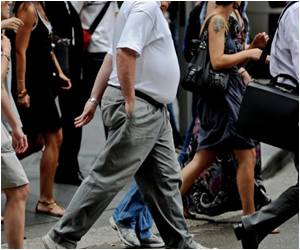The risk of childbearing may depend on the number of obese children in their schools for young women in the high school, a study suggests.

When the researchers examined the risk of childbearing for obese and non-obese young women, the obesity prevalence of schools did not change non-obese young women's risk of childbearing, but it did change the risk for obese young women having children. For these young women, the odds of childbearing consistently increased as the obesity prevalence in schools increased and eventually surpassed non-obese young women's risk of childbearing when roughly 17 percent of students in a high school were obese.
The researchers used information from the National Longitudinal Study of Adolescent Health to examine the behaviors of 4,242 female students attending 102 high schools in the U.S.The researchers, who report their findings in the current issue of Social Science and Medicine, determined whether young women and students in their schools were obese by using the height and weight data from the National Longitudinal Study of Adolescent Health and guidelines from the Centers for Disease Control and Prevention on determining obesity.
Kane said that one theory suggests that obese females may have limited opportunities to establish sexual relationships. However, when they do have opportunities, they may also feel less empowered in a relationship and research shows they are more likely to engage in risky sexual behavior, including unprotected sex. She added that they are also more likely to use drugs and alcohol before sex, which also increases the likelihood of unprotected sex.
Health officials, who may ignore intervention strategies for obese students because they believe the risk of pregnancy is minimal, should consider how obesity prevalence rates may affect the pregnancy risks in their schools, according to the researchers. "We need to teach all young women to make better and smarter decisions," Frisco said. "A one-size-fits-all approach to understanding adolescent pregnancy and childbirth doesn't work."
Source-Eurekalert















